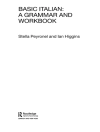Playing the Archive: From the Opies to the digital playground reflects on a major study inspired by the work of citizen scholar folklorists Iona and Peter Opie. In the 1950s and 1960s, the Opies built a vast collection of children’s street and playground games, stories, sayings, rhymes, beliefs and habits as told to them by children all over Britain. These accounts are now held in the Bodleian Libraries and were the focus and inspiration for the new study. New stories and games were gathered from today’s children, and comparisons drawn between play experiences at these two different points in time.
The book explores how the Opie Archive was made publicly available online by the project through digital images, innovative cataloguing and playful digital media interfaces, such as a red telephone kiosk at the Young V&A. Chapters analyse the ethnographic strands of the project, collecting evidence of new and old forms of play on today’s playgrounds using state-of-the-art digital methods. The book proposes new ways of thinking about changes and adaptations to play and games, theorising on the workings of interfaces, repertoires and archives. It also considers the Opies’ ways of working, landscapes of play over time, and intergenerational dialogue about play. The collection presents research evidence and theory which speak back to the often reductive public discourse around children’s play and digital media. It positions children as creative, agentive and engaged participants in their play cultures.
Inhaltsverzeichnis
List of figures
List of contributors
Preface
Acknowledgements
1 Play: archive, interface, repertoire
Andrew Burn
PART I: The people in the archive
2 Folklore, friendships and reciprocity: hearing the epistolary relationships in the multi-vocal archive of Iona and Peter Opie
Catherine Bannister, Julia C. Bishop and Alison Somerset-Ward
3 Hopscotching the Opies: playing (with) the archive in Bloomsbury
Michael Eades
4 Half-belief and ‘belief play’ in the haunted primary school: children’s supernatural play in a digital era
Catherine Bannister, Julia Bishop and Kate Cowan
PART II: Capturing play
5 Research as play
Kate Cowan, John Potter and Valerio Signorelli
6 Play and digital media: laminates, frames and lifeworlds
John Potter and Kate Cowan
7 From interfaces to memories: re-constructing and transmitting memories of play
Valerio Signorelli, Leah Lovett, Andy Hudson-Smith and Duncan Hay
PART III: Play in space and time
8 Spaces for play: beyond streets and playground
Helen Woolley and Alison Somerset Ward
9 Meshwork, playlines and palimpsests: a tracing of play over time
Jackie Marsh and Julia Bishop
10 Crossing the generational divide in play: individual and collective memories in conversation
Julia Bishop
PART IV: Future play
11 Ludic time travel: from the archive to the digital playground and the Play Observatory
John Potter and Kate Cowan
Index
Über den Autor
Julia Bishop is a Research Associate at the University of Sheffield School of Education.












